As you know, we’re in the middle of awards season. Oscars. Grammys. Golden Globes. All fine trophies to be had. But my favorite kudos, of course, are The 2020 Stackies: Marketing Tech Stack Awards. Marketers send in a single 16×9 slide that illustrates the way they think of their marketing stack. We share them all with the community. And then we celebrate the winners of the five best (where “best” is a function of how they educate and inspire us).
The contest is open for entries through March 20, and then we’ll announce the winners at the MarTech conference in April in San Jose. (Checking on a red carpet now.)
But along the way, I’m eager to highlight great entries as they come in. Such as today’s, sent in by Mary Blanks, director of marketing capabilities in global marketing operations at Red Hat. (By the way, can I just say how much I love the framing of “marketing capabilities” in marketing operations?)
You can click on the image at the top of this post to zoom in on a larger version of their stack.
The overarching design is aligned with their customer journey: customers exploring change, committing to change, exploring solutions, and finally committing to a solution. Below that is a back-channel of measuring and analyzing responses, the data from which also feeds back into optimizing and personalizing customer experiences. The illustration does a really nice job of representing the flow across these stages, while keeping the customer in mind throughout.
It’s also a good example of an enterprise multi-platform stack, with Adobe, Oracle Eloqua, and Salesforce all in the mix, along with a diverse set of more specialized products. It’s a best-of-breed world.
Want to learn more about how they actually got this all to work? Joel Eaton and Tim Sawicki, a data architect and data engineer respectively from Red Hat, will be presenting “How To Get Your Martech Stack To Share Data And Play Nicely” at the MarTech Conference in San Jose, April 15-17. (Note: the early bird “alpha” rate on tickets expires in two weeks!)
To quote from their session description:
We love SaaS marketing applications — but making them play well together is hard, especially as your data sets get larger and larger. With millions of contacts, leads, and campaign transactions handled daily, we needed a way to make our tech stack integrations faster, more reliable, and flexible enough to handle upgrades and additions without having to change everything else.
In this session, you’ll gain insights into how Red Hat used leading-edge, open source software to build a marketing integration platform that shares data in near real time and is application agnostic. You’ll discover how it works, how the experience of building it challenged the way we thought about data, and how it’s changing the way Red Hat does marketing.
Mary and team were also willing to answer to a few questions about their stack to hear their thinking behind it in advance:
Can you walk us through the model you created to organize your martech stack and tell us about the inspiration behind it?
It was important for us to depict our stack in terms of how it aligns to and fuels the customer journey. We organized based on capabilities rather than individual tech. We wanted our marketers to better understand how the tools support the activities they’re running each day.
It begins with customers and prospects exploring change and researching potential solutions online. Our web properties provide solution-focused content aligned to key IT challenges. As visitors gather more information, we offer additional resources via content syndication efforts, events, paid media, and social platforms. As we learn more about them, we use our marketing automation platform to refine the content we deliver and nurture the relationship. We also offer assessments to help them evaluate solutions and give them easier, faster ways to engage with content.
We enrich data where needed and create insights to help us optimize interactions and move customers and prospects farther along in their journey, faster. As they begin to commit to a solution, we stitch together all of these signals of demand generated across our stack and further qualify their needs and interests to prepare them for sales.
I love that your stack illustration is aligned to a customer’s journey. Were there other organizing frameworks that you considered?
Yes, there was a lot of healthy debate about the approach.
Among the different variations we considered was a circular model with the customer placed at the center and the martech sort of radiating out from there, but that proved to be tough to unpack.
Ultimately the final version allowed us to both illustrate the stack and tell a streamlined story (which we reinforce in a video walkthrough) about how it all fits together to support today’s evolving buyer’s journey. We were intentional about highlighting core capabilities, like events and paid media, that we expect to remain in the stack for quite some time, while leaving flexibility to add and change the underlying tech that supports those capabilities.
Were there any new insights you had into your martech stack when illustrating this slide for the Stackies?
One of the most compelling things about this stack is how all of the interactions and data generated are used to help inform optimization and personalization for the experience.
We are very careful to ensure our marketers understand the importance of setting up their activities correctly and tracking that engagement so we can see what’s effective and what may need to be optimized as we move forward.
What words of advice would you offer to other marketers thinking about how to best organize and manage their martech stack?
Keep two perspectives in mind: your customers and your marketers.
How does your stack support the customer? We see our martech stack as organized around offering a great digital experience supplemented by additional activities specifically designed to address the decisions and challenges our customers and prospects are working to solve every day.
If your marketers don’t understand how the tools fit together and what’s important to track, the individual tools alone don’t matter.
The other key component is to think of it as “marketing to marketing.” If your marketers don’t understand how the tools fit together and what’s important to track, the individual tools alone don’t matter. They have to collectively tell a compelling story that makes marketers want to learn more and use the tech to help their target audiences.
Thanks, Mary and team! We really appreciate you sharing this with us.
Reminder to everyone else: You have until Friday, March 20 to send in your entry to The Stackies 2020: Marketing Tech Stack Awards. It’s so helpful to the community to learn from examples of how different organizations think of their marketing stack. I hope you’ll contribute!
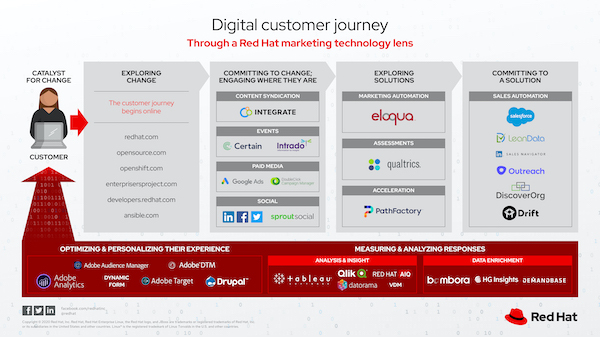
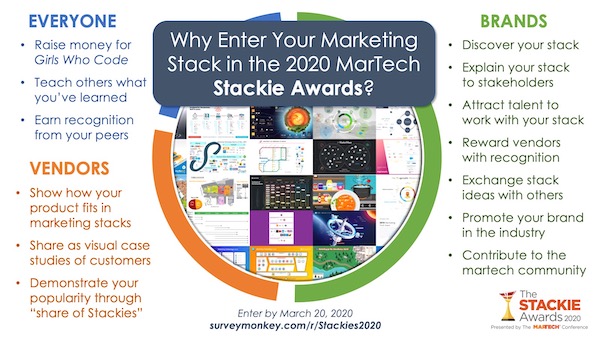
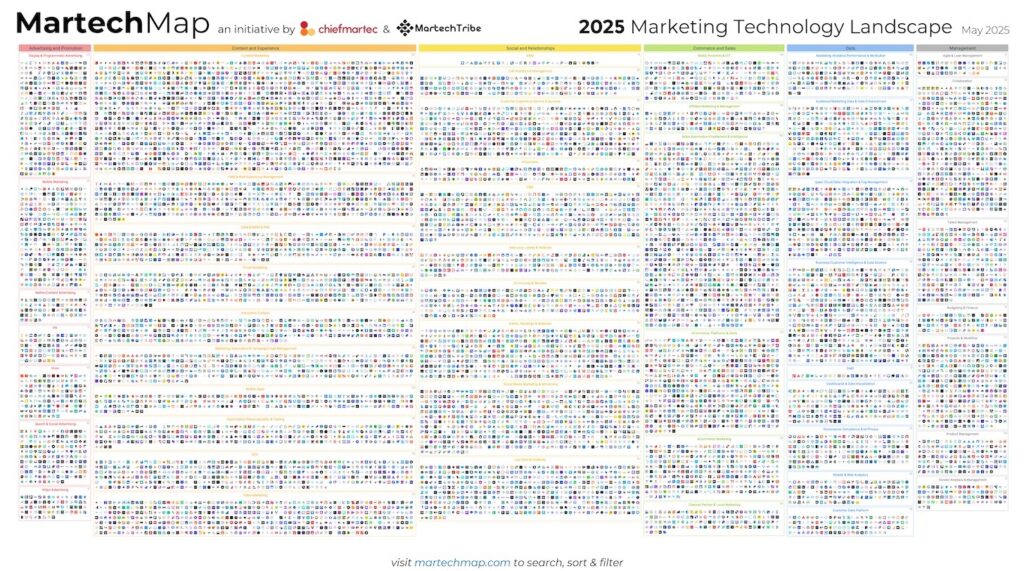
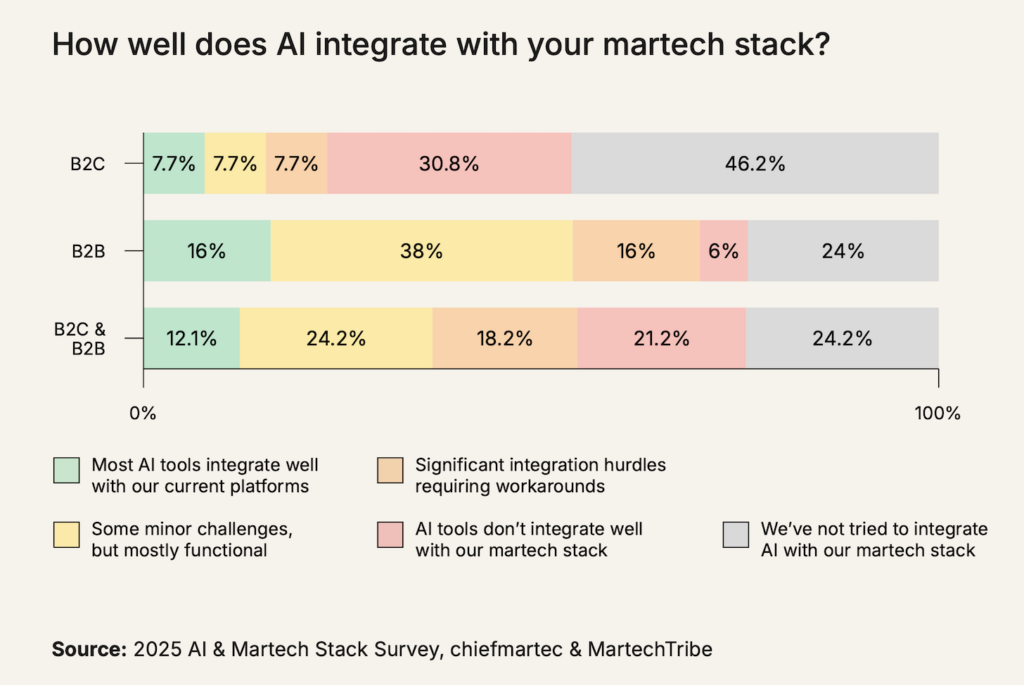
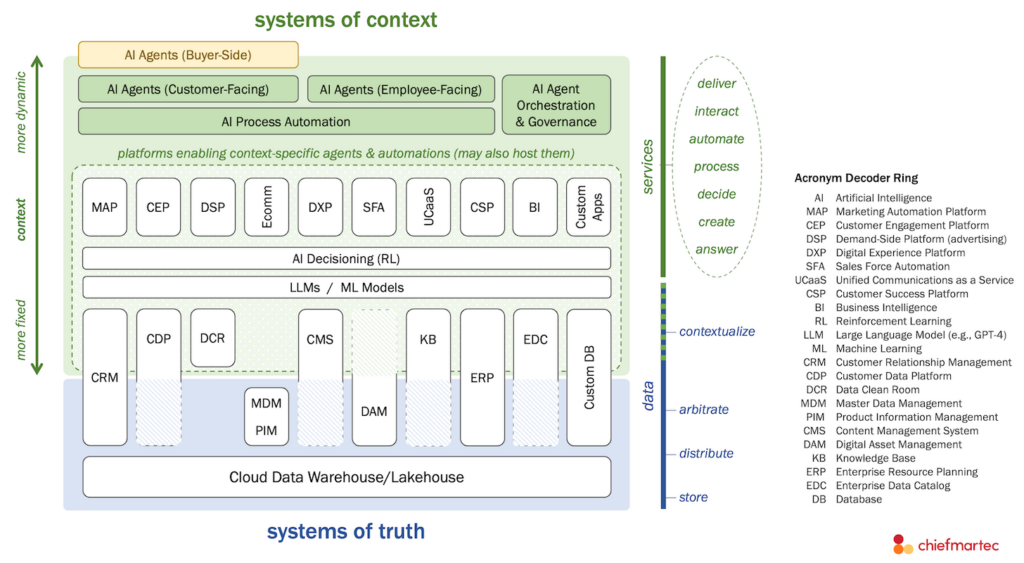
Thanks for the collaboration and opportunity to share Red Hat’s marketing technology stack! There’s an awesome team of amazing Red Hatter’s in our operations teams around the globe that power this stack and enable our marketers to use it most efficiently and effectively. Kudos to all those teams and amazing people that bring the stack to life each day!